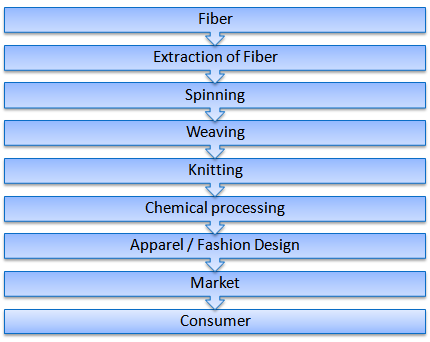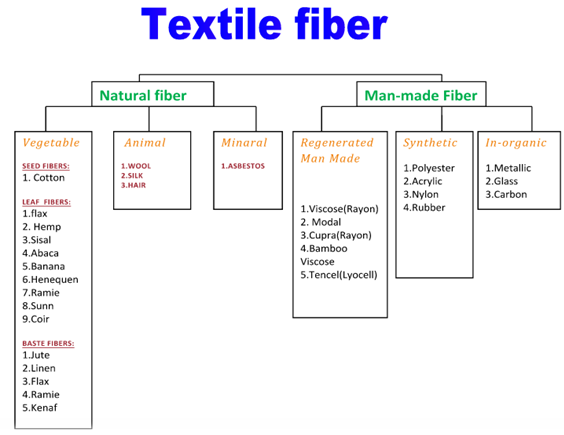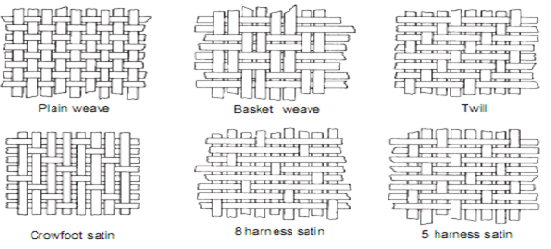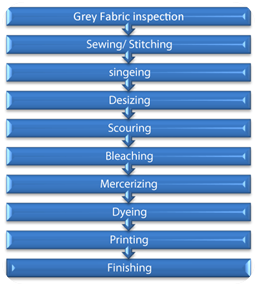Now You Know Comprehensive Study of Textile from Fiber to Fashion
Friday, 1 June 2018
Edit
INTRODUCTION
FIBER – is the smallest unit of any textile material whose length is thousands and thousands time longer than its cross section. The fibers are classified into different groups as mentioned below:
EXTRACTION OF FIBERS – The fibers are different sources. The natural fibers like cotton is extracted from the seed cotton by ginning process, flax (linen) / jute by retting process from the bark of the jute or the flax plant, wool is extracted by shearing process from the sheep’s body, silk is extracted by reeling process by boiling the cocoons and then degumming it and the man-made are extracted by three spinning processes: Melt, Dry and Wet spinning.
As this extraction processes are quite time taking many new technologies are introduced such as the technology developed by CSIR-NIIST involves an anaerobic (oxygen-less) process mediated through microbial action for the banana fiber.
SPINNING - The process, by which the fibers are converted into yarns, is termed as Spinning. The process of spinning is: Blow room line – the bales are opened mixed and blended, Carding – heart of spinning, the fibers (lap) is cleaned, Draw frame – the sliver is converted into thick yarns, Speed Frame – the thick yarns slightly twisted then slightly thinner yarns are produced, Ring Frame – produces perfect yarns and also enhances the quality of the yarn. By the above mentioned process the fiber is converted into yarns.
WEAVING - is a method of textile production in which two distinct sets of yarns or threads are interlaced at right angles to form a fabric or cloth. The longitudinal threads are called the warp and the lateral threads are the weft. Before weaving, sizing process is done in which a size paste is applied on in order to improve the strength and the abrasion resistance of the warp threads. The weaving is done in a loom. The types of weaves are mentioned below:
KNITTING - is a method by which yarn is manipulated to create a textile or fabric and creates multiple loops of yarn, called stitches, in a line or tube.
CHEMICAL PROCESSING – is to remove the impurities from the fabric and including pretreatment, dyeing, printing, finishing. It is classified into two groups: dry chemical processing and wet chemical processing. The dry processing includes: grey inspection, stitching or sewing and singeing and the wet processing includes: desizing, scouring, bleaching, mercerizing, dyeing, printing and finishing.
In the Grey fabric inspection section - the fabric is inspected whether it have any defects or is it fit for the further process, then Stitching or Sewing - is done for cleaning the fabric and for repairing the major and minor defects in it, Singeing – removing the small protruding fibers on the fabric surface, Desizing – removal of size paste from the warp threads and allow the water to penetrate in, Scouring – removal of fatty acids,oils,waxes and other impurities i.e. pectin materials, Bleaching - whitens the fabric and put out of sight the yellow tints, Mercerizing - is the treatment of fabric with concentrated caustic soda under fabric tension. The objective is to achieve a high degree of mercerization thereby improving: luster, dye uptake, tensile strength, Dyeing - is the process of adding color to textile products like fibers, yarns, and fabrics which is retained by the fabric completely, Printing - is the process of applying color to fabric in definite patterns or colors are applied to it in certain parts only, and in sharply defined patterns and Finishing - is a process used in manufacturing of fiber, fabric, or clothing.
APPAREL/ FASHION DESIGN - Apparel designers, also called clothing or fashion designers, conceptualize and create items of clothing. They often specialize in one type of design, such as casual, evening or active wear. Common duties include tracking current fashion trends and predicting future ones, sketching new designs, selecting patterns and fabrics to use in garments and overseeing production. They may then show items to creative directors, clients or retailers, depending on if the garments are to be custom designed or mass produced.
Fashion designers are mostly employed by wholesale or manufacturing outlets, where garments are typically created for mass production; designers can also work for apparel companies, retailers, design firms and theater companies. In these settings, they tend to work as full- or part-time members within a team. At times, long hours are needed to reach deadlines. A number of apparel designers are self employed; they often create custom clothing and may work unusual hours to meet clients' needs. Fashion designers frequently travel to visit manufacturers, attend trade or fashion shows and gain artistic inspiration.
MARKET - The Textile industry in India traditionally, after agriculture, is the only industry that has generated huge employment for both skilled and unskilled labor in textiles. The textile industry continues to be the second largest employment generating sector in India. It offers direct employment to over 35 million in the country. The share of textiles in total exports was 11.04% during April–July 2010, as per the Ministry of Textiles. During 2009-2010, Indian textiles industry was pegged at US$55 billion, 64% of which services domestic demand. In 2010, there were 2,500 textile weaving factories and 4,135 textile finishing factories in all of India. According to AT Kearney’s ‘Retail Apparel Index’, India is ranked as the fourth most promising market for apparel retailers in 2009.
India is first in global jute production and shares 63% of global textile and garment market. India is 2nd in global textile manufacturing and also 2nd in silk and cotton production. 100% FDI is allowed via automatic route in textile sector. Rieter, Trutzschler, Soktas, Zambiati, Bilsar, Monti, CMT, E-land, Nissinbo, Marks & Spencer, Zara, Promod, Benetton, Levi’s are the some of foreign textile companies invested or working in India.
India is the second largest producer of fiber in the world and the major fiber produced is cotton. Other fibers produced in India include silk, jute, wool, and man-made fibers. 60% of the Indian textile Industry is cotton based. The strong domestic demand and the revival of the Economic markets by 2009 have led to huge growth of the Indian textile industry. In December 2010, the domestic cotton price was up by 50% as compared to the December 2009 prices. The causes behind high cotton price are due to the floods in Pakistan and China. India projected a high production of textile (325 lakh bales for 2010 -11). There has been increase in India's share of global textile trading to seven percent in five years. The rising prices are the major concern of the domestic producers of the country.  TRENDS - Fashion forecasting is a global career that focuses on upcoming trends. A fashion forecaster predicts the colors, fabrics, textures, materials, prints, graphics, beauty/grooming, accessories, footwear, street style, and other styles that will be presented on the runway and in the stores for the upcoming seasons. The concept applies to not one, but all levels of the fashion industry including haute couture, ready-to-wear, mass market, and street wear. Trend forecasting is an overall process that focuses on other industries such as automobiles, medicine, food and beverages, literature, and home furnishings. Fashion forecasters are responsible for attracting consumers and helping retail businesses and designers sell their brands. Today, fashion industry workers rely on the Internet to retrieve information on new looks, hot colors, celebrity wardrobes, and designer collections.
TRENDS - Fashion forecasting is a global career that focuses on upcoming trends. A fashion forecaster predicts the colors, fabrics, textures, materials, prints, graphics, beauty/grooming, accessories, footwear, street style, and other styles that will be presented on the runway and in the stores for the upcoming seasons. The concept applies to not one, but all levels of the fashion industry including haute couture, ready-to-wear, mass market, and street wear. Trend forecasting is an overall process that focuses on other industries such as automobiles, medicine, food and beverages, literature, and home furnishings. Fashion forecasters are responsible for attracting consumers and helping retail businesses and designers sell their brands. Today, fashion industry workers rely on the Internet to retrieve information on new looks, hot colors, celebrity wardrobes, and designer collections.
Design schools include:
Argentina
There are many universities that offer fashion design throughout the United States, usually within the context of a general liberal arts degree. The major concentration incorporating fashion design may have alternative names like Apparel and Textiles or Apparel and Textile Design, and may be housed in departments such as Art and Art History, or Family and Consumer Studies. Some schools, such as Parsons, offer a major in Fashion Management, combining fashion education with business courses.
CONCLUSION - Fashion and identity are inseparable companions. Fashion with all its symbolism and attributes form an outstanding base for personal and cultural identification. Identity is a necessary process of a healthy personality as it is a part of self-realization of a person that is so much required for finding a place in life of every person. Fashion has become a tool for achieving harmony with the inner world and a way of revealing or concealing peculiarities. Fashion possesses a specific meaning and the more diverse is the society around us the more fashion-trend will appear and surprise us. As long as it does not hurt people around fashion symbols are acceptable, nevertheless while thinking about fashion and identity it is necessary to remember the ethical side of the issue. Fashion and identity through it still remains a twofold issue but there are a lot of positive aspects one can enjoy and share with other people.
REFERENCES –
Published by-
Swatz Swati
Email: teenabbsr@gmail.com
Fiber to fashion emphasizes a relationship between small fibers to the great fashion. It’s means that the apparels we all prefer in our day to day life are just from a small fiber. We get the fiber from different sources natural; animals and artificial fibers (man-made). The fibers are first extracted from its sources and then send to the processing or for the further processes. The fiber is first sent to the spinning department for yarns, then to the weaving department, to the chemical processing department, garment manufacturers, designers, producers and then at last buyer.
LIFE CYCLE OF TEXTILE PRODUCT -
 |
 |
As this extraction processes are quite time taking many new technologies are introduced such as the technology developed by CSIR-NIIST involves an anaerobic (oxygen-less) process mediated through microbial action for the banana fiber.
SPINNING - The process, by which the fibers are converted into yarns, is termed as Spinning. The process of spinning is: Blow room line – the bales are opened mixed and blended, Carding – heart of spinning, the fibers (lap) is cleaned, Draw frame – the sliver is converted into thick yarns, Speed Frame – the thick yarns slightly twisted then slightly thinner yarns are produced, Ring Frame – produces perfect yarns and also enhances the quality of the yarn. By the above mentioned process the fiber is converted into yarns.
 |
 |
CHEMICAL PROCESSING – is to remove the impurities from the fabric and including pretreatment, dyeing, printing, finishing. It is classified into two groups: dry chemical processing and wet chemical processing. The dry processing includes: grey inspection, stitching or sewing and singeing and the wet processing includes: desizing, scouring, bleaching, mercerizing, dyeing, printing and finishing.
In the Grey fabric inspection section - the fabric is inspected whether it have any defects or is it fit for the further process, then Stitching or Sewing - is done for cleaning the fabric and for repairing the major and minor defects in it, Singeing – removing the small protruding fibers on the fabric surface, Desizing – removal of size paste from the warp threads and allow the water to penetrate in, Scouring – removal of fatty acids,oils,waxes and other impurities i.e. pectin materials, Bleaching - whitens the fabric and put out of sight the yellow tints, Mercerizing - is the treatment of fabric with concentrated caustic soda under fabric tension. The objective is to achieve a high degree of mercerization thereby improving: luster, dye uptake, tensile strength, Dyeing - is the process of adding color to textile products like fibers, yarns, and fabrics which is retained by the fabric completely, Printing - is the process of applying color to fabric in definite patterns or colors are applied to it in certain parts only, and in sharply defined patterns and Finishing - is a process used in manufacturing of fiber, fabric, or clothing.
 |
Fashion designers are mostly employed by wholesale or manufacturing outlets, where garments are typically created for mass production; designers can also work for apparel companies, retailers, design firms and theater companies. In these settings, they tend to work as full- or part-time members within a team. At times, long hours are needed to reach deadlines. A number of apparel designers are self employed; they often create custom clothing and may work unusual hours to meet clients' needs. Fashion designers frequently travel to visit manufacturers, attend trade or fashion shows and gain artistic inspiration.
 |
India is first in global jute production and shares 63% of global textile and garment market. India is 2nd in global textile manufacturing and also 2nd in silk and cotton production. 100% FDI is allowed via automatic route in textile sector. Rieter, Trutzschler, Soktas, Zambiati, Bilsar, Monti, CMT, E-land, Nissinbo, Marks & Spencer, Zara, Promod, Benetton, Levi’s are the some of foreign textile companies invested or working in India.
India is the second largest producer of fiber in the world and the major fiber produced is cotton. Other fibers produced in India include silk, jute, wool, and man-made fibers. 60% of the Indian textile Industry is cotton based. The strong domestic demand and the revival of the Economic markets by 2009 have led to huge growth of the Indian textile industry. In December 2010, the domestic cotton price was up by 50% as compared to the December 2009 prices. The causes behind high cotton price are due to the floods in Pakistan and China. India projected a high production of textile (325 lakh bales for 2010 -11). There has been increase in India's share of global textile trading to seven percent in five years. The rising prices are the major concern of the domestic producers of the country.
- Man Made Fibers: These include manufacturing of clothes using fiber or filament synthetic yarns. It is produced in the large power loom factories. They account for the largest sector of the textile production in India. This sector has a share of 62% of the India's total production and provides employment to about 4.8 million people.
- The Cotton Sector: It is the second most developed sector in the Indian Textile industries. It provides employment to huge amount of people but its productions and employment is seasonal depending upon the seasonal nature of the production.
- The Handloom Sector: It is well developed and is mainly dependent on the SHGs for their funds. Its market share is 13% of the total cloth produced in India.
- The Woolen Sector: India is the 7th largest producer of the wool in the world. India also produces 1.8% of the world's total wool.
- The Jute Sector: The jute or the golden fiber in India is mainly produced in the Eastern states of India like Assam and West Bengal. India is the largest producer of jute in the world.
- The Sericulture and Silk Sector: India is the 2nd largest producer of silk in the world. India produces 18% of the world's total silk. Mulberry, Eri, Tasar, and Muga are the main types of silk produced in the country. It is a labor-intensive sector.

SCOPE AND OPPORTUNITIES FOR FASHION DESIGN - There are a number of specialized art schools and design schools worldwide that offer degrees in fashion design and fashion design technology. Some colleges also offer Masters of Fashion courses.
Design schools include:
Argentina
- School of Architecture, Design and Urbanism, University of Buenos Aires, Buenos Aires
- University of Palermo, Buenos Aires
- Sydney Institute of TAFE
- Bangladesh University of Textiles (BUTex), Dhaka
- Shanto-Mariam University of Creative Technology, Dhaka
- BGMEA Institute of Fashion & Technology (BUFT), Dhaka
- La Cambre
- Royal Academy of Fine Arts (Antwerp)
- George Brown College
- Toronto Film School
- Hong Kong
- Hong Kong Polytechnic University
- Copenhagen Academy
- IFM Paris (Institut Français de la Mode)
- IFA Paris
- Ecole de la Chambre Syndicale de la Couture Parisienne
- ESMOD
- Studio Berçot
- Tbilisi State Academy of Arts
- AMD Academy of Fashion and Design
- Berlin University of the Arts
- HTW Berlin
- University of the Arts Bremen
- Kunstakademie Düsseldorf
- Giebichenstein Castle Academy of Arts in Halle
- Academy of Fine Arts, Karlsruhe
- Academy of Fine Arts, Munich
- Academy of Fine Arts, Nuremberg
- Design Hochschule Schwerin & Leipzig
- Limerick School of Art and Design
- National College of Art and Design
- National Institute of Fashion Technology
- Amity University
- Pearl Academy of Fashion
- Apeejay Institute of Design
- Raffles Design International, Mumbai
- Istituto Marangoni
- Politecnico of Milan
- Istituto Europeo di Design
- University Iuav of Venice
- Shenkar College of Engineering and Design
- Bunka Fashion College
- Sugino Fashion College
- Pakistan Institute of Fashion and Design
- Gheorghe Asachi Technical University of Iași
- George Enescu University of Arts of Iași
- Art and Design University of Cluj-Napoca
- West University of Timișoara - Faculty of Fine Arts and Design
- Turkey
- IFA Paris
- Izmir University of Economics
- Central Saint Martin’s College of Art and Design
- Condé Nast College of Fashion & Design
- Royal College of Art
- Kingston University
- London College of Fashion
- University of Westminster
- Ravensbourne College of Design and Communication
- University of Brighton
- De Montfort University
- Richmond University
- Bradford College
- University for the Creative Arts (Rochester & Epsom)
- Heriot-Watt School of Textiles and Design, Edinburgh
- The Glasgow School of Art
- Edinburgh College of Art
- Parsons The New School for Design in New York City, New York
- Fashion Institute of Technology in New York City, New York
- Savannah College of Art and Design in Savannah, Georgia
- Drexel University in Philadelphia, Pennsylvania
- Pratt Institute in New York City, New York
- Rhode Island School of Design in Providence, Rhode Island
- Kent State University in Kent, Ohio
- Otis College of Art & Design in Los Angeles, California
- California College of the Arts in San Francisco, California
- Philadelphia University in Philadelphia, Pennsylvania
- Academy of Art University in San Francisco, California
- Fashion Institute of Design & Merchandising in Los Angeles, California
- School of the Art Institute of Chicago in Chicago, Illinois
- Columbus College of Art and Design in Columbus, Ohio
- Columbia College Chicago in Chicago, Illinois
- El Centro College in Dallas, Texas
- Middle Tennessee State University in Murfreesboro, Tennessee
- O'More College of Design in Franklin, Tennessee
- Virginia Commonwealth University in Richmond, Virginia
- Woodbury University in Burbank, California
- Lasell College in Newton, Massachusetts
Related:
CONCLUSION - Fashion and identity are inseparable companions. Fashion with all its symbolism and attributes form an outstanding base for personal and cultural identification. Identity is a necessary process of a healthy personality as it is a part of self-realization of a person that is so much required for finding a place in life of every person. Fashion has become a tool for achieving harmony with the inner world and a way of revealing or concealing peculiarities. Fashion possesses a specific meaning and the more diverse is the society around us the more fashion-trend will appear and surprise us. As long as it does not hurt people around fashion symbols are acceptable, nevertheless while thinking about fashion and identity it is necessary to remember the ethical side of the issue. Fashion and identity through it still remains a twofold issue but there are a lot of positive aspects one can enjoy and share with other people.
REFERENCES –
- http://www.custom-essays.org/samples/Fashion_and_Identity.html
- http://www.textileworld.com/Issues/2015/_2014/Fiber_World/Man-Made_Fibers_Continue_To_Grow
- http://study.com/articles/Apparel_Designer_Career_Information_for_Becoming_a_Fashion_and_Apparel_Designer.html
- https://en.wikipedia.org/wiki/Fashion_design
- https://www.google.co.in/search
Published by-
Swatz Swati
Email: teenabbsr@gmail.com
Sumber http://textilelearner.blogspot.com







